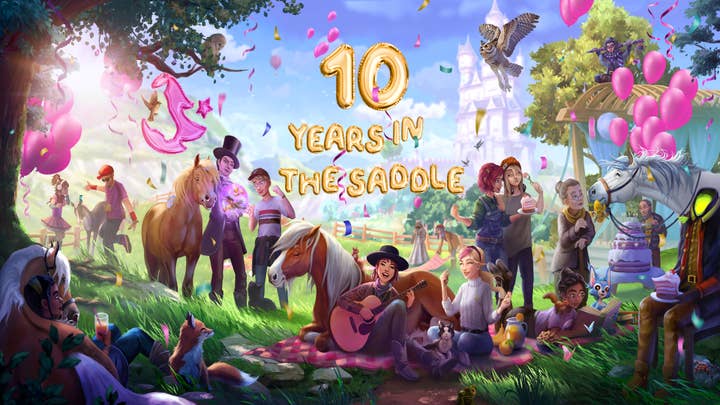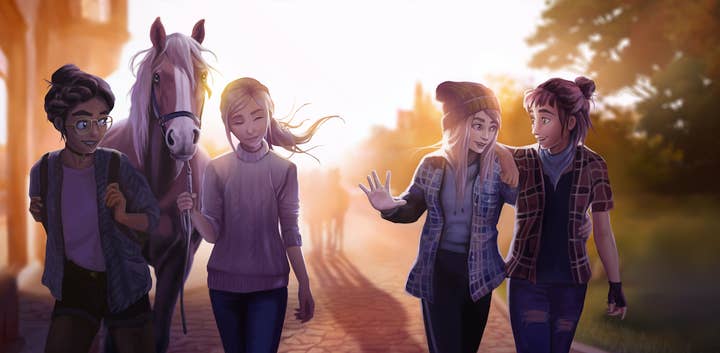How to get the most out of your community and embrace its ideas
Star Stable's Johan Sjöberg gives tips about interacting with your players in a way that helps grow your company
In 2015, the team at Star Stable had what we would call a calamitous event for any gaming company.
A power outage corrupted our player database. Which also corrupted our backup database.
Millions of players who were in our MMORPG horse adventure game, Star Stable Online, were kicked out with no indication when they could get back on.
Instead of a riotous online backlash, we had fans arrive at our offices in the middle of the night, bearing cinnamon buns and coffee
Instead of a riotous online backlash, we had fans in our hometown of Stockholm arrive at our offices in the middle of the night, bearing cinnamon buns and coffee, because they knew we were working hard to get everything back online.
It's easy to just say: "Your customer is everything." But in the games industry it's more than a slogan. Your community is not just a collection of players -- they are your brand, your permanent focus-group, your best ambassadors and most vocal critics. They are a source of ideas, features, challenges and constant inspiration.
Star Stable recently celebrated its ten-year anniversary, and here's what we have learned about interacting with a community, and how these interactions can lead to the long-term growth of your business.
Listen to all your player segments, not just the new or veterans
As your community grows, it will start to form into three distinct segments:
- new players
- lapsed players who are returning after time away
- long-term committed players
Ensure you understand the needs of each segment and, ideally, regularly release updates or new content that caters to each segment's needs. It's easy to run astray and focus only on the newly onboarded player, or long-term players, or only the players who are the most vocal in community forums.
You can't always do it all, but you should be listening and making conscious choices so that you don't inadvertently fragment your audience
The competing needs of each segment are evident in the responses to big releases, such as the unveiling of a new area of a map, or recurring in-game events. Perhaps new players will want your new map to be fully integrated into the storyline, while established players will want it to be particularly challenging or visually stunning.
The challenge for recurring events will be making them navigable and awe-inspiring for new players while clearly articulating what is new or different for returning or established players.
You can't always do it all, and the right balance isn't always easy or even possible to find. But you should be listening and making conscious choices so that you don't inadvertently fragment your audience.

Balance active player feedback with concrete data
We have very good relationships with our ambassadors, who are quite often long-time players who have a very good sense of what they want, how the game has evolved over the last ten years, and who are also the most vocal. That's a crucial relationship every game developer should develop and respect.
However, it's also important to gather both quantitative and qualitative data about how all players behave in the game, and especially the player segments that might not be as communicative in other forums. This will ensure you have a well-rounded view of your player base and make more informed decisions.
Reach your community where they are
We monitor and interact with our fans in several different forums, from social media to our customer service channel to Discord.

What's most important is finding out where your players are spending the most time and where they are expecting to be able to communicate with you, whether that's in-game, in social channels, on streaming services and even in person.
For example, our players now flock to Instagram as a key platform, where it used to be Facebook. One of our lead engineers regularly posts to Instagram about what he is working on, explaining the ins-and-outs of bugs, and that has been extremely popular with our community. Of course, this won't be the same for every game.
More and more, we are experimenting with proactively communicating in-game and in our game launcher about things that used to be in outside channels -- whether it be specifics about game changes or technology updates our players will need to keep playing.
Embrace ideas generated by your community
Enthusiastically seek out and lean into ideas that arise from your community. They can become your most popular game features. This sounds simple enough, but it's easy to forget or to always think you as the game creators know best.
Enthusiastically seek out and lean into ideas that arise from your community
In 2020, our team picked up on the growing trend of players editing artwork, making videos, creating stories, and role-playing with the theme of the old American West. We responded by creating an entirely new western-themed area, updating our American Quarter Horse, and releasing new western equipment and activities.
Most recently, for our tenth anniversary we delivered the most requested reward in the game -- a free horse. We asked our players to vote on the design and then released it as a birthday gift for every player. We broke our all-time daily active user record on the first day of our birthday celebrations, with 90% of our active players claiming the horse that same day.

Be transparent, honest and sensitive to where your players need help
I think it goes without saying that you should treat your community with the utmost love and respect.
Honesty and transparency goes a long way when it comes to explaining what you're doing, why you are doing it, and what you are hoping to achieve. Part of that is also acknowledging when things go wrong and what you are doing to fix it.
You should treat your community with the utmost love and respect
It's also key to show patience if some of the less technologically-savvy of your players need help to get up and running, as might be the case if you cater to younger or casual gamers.
It's always good to err on over-communicating when it comes to the scheduled frequency or details of new releases because it can help to set expectations amongst fans.
Monitor and quickly address bad behavior
Again, this seems like a no-brainer, but it's worth noting and making sure you have systems in place to tackle toxic behavior and never let your guard down.
Have a constructive strategy, and then consistently address the problem when people are disrespectful, aggressive or threatening to other players. It is critical to let your community know what is acceptable behavior, and remind them about your community rules and values.
A bad situation can fester and blow up, leading to larger problems that affect the entire business
Apart from it being the right thing to do, a bad situation can fester and blow up, leading to larger problems that affect the entire business.
Also provide as many options as possible to report or discuss toxic behavior. At Star Stable, we make sure players can report issues via our customer support, the website, a specific report tool for Swedish-based players, and even our Game Masters -- Star Stable employees active in the game itself to whom players know they can reach out. We also make sure to augment AI detection of toxic behavior with human moderation.
The people behind your game should reflect the people who play
Star Stable is fortunate; so many of our developers and artists were first Star Stable players and fans themselves. For example, our game director Stacy Place was a passionate player before becoming a full-time team-member.
She began working with us as a consultant, then she went on to become product owner, then head of community which means she was in there moderating and interacting with fans and has an attuned sense of what our players want. Today, as our game director, she's driving the long-term vision for the game based on her deep understanding of the community and love of the game.
Equally important, the majority of Star Stable employees are women, and the reflection of our players makes a huge difference when it comes to communicating with players and understanding their needs.
Johan Sjöberg is CEO of Star Stable Entertainment, the creator of multiplayer role-playing horse adventure game Star Stable Online. He joined the company in 2010 as a founding board member and was named CEO in 2018. During his tenure, he transformed the popular PC game into a global multi-channel brand with a music label, original book series, animations, comics and mobile apps.
